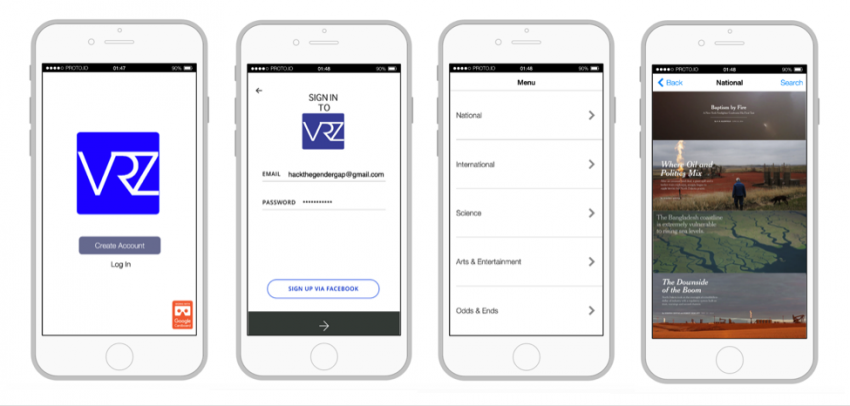For some reason, in my head, I’ve always had a really vivid image of what a hackathon might look like: a conference for brilliant individuals (who probably self-taught themselves how to code when they were 11-years-old), madly typing away on their computer and seeing possibilities that I couldn’t see. I’d probably meet the next CEO of Silicon Valley’s newest tech start-up. Or, meet other superhero geniuses in the form of young 20-year-old bodies.
So, when I went to my first hackathon in Los Angeles last weekend with zero coding knowledge, I was nervous. But, I quickly realized that the story I had all up in my head wasn’t entirely the truth. The event at USC’s Annenberg School of Journalism wasn’t your traditional hackathon where a certain level of coding knowledge might be necessary. It was more of a pitch-a-thon full of design thinking, business planning, and learning to market your idea. I was assigned to a random team of six students and we were given the following challenge: create the next business/service/app around immersive journalism and virtual reality that would be feasible, engaging, and worthy. So, for the next 28 hours, my team and I brainstormed. And boy, did we learn some lessons.
Start off by thinking of a current problem you want to solve
In our case, we wanted to know why journalism VR content wasn’t being distributed. What were the barriers? Why wasn’t there more content out there when all that’s required to view it is a piece of cardboard and smartphone? Our frustration led to our solution: we decided that there needed to be a platform for VR content to be created and distributed. That’s how VRzine was born – a mobile magazine that would help readers use virtual reality to feel as though they’re watching moments unfold before their eyes. We didn’t want to “break” the news. Instead, we wanted to use technology to make people feel empathetic towards real-life news events. While VR content aggregating apps like VRSCE or Jaunt are in the market, they weren’t producing content on a regular basis. With VRzine, we wanted to create a new publication that was dedicated to the intersection between VR and journalism (or how we like to call it: joVRnalism).
*Update: The NYT announced on Tuesday about a new virtual reality project in collaboration with Google and the distribution of free Google Cardboards to its print subscribers.

Do not try to be a one-size-fits-all model
Our idea for VRzine got us really excited. We saw so many ways that our app could be used for the 23-year-old law school student by day and environmentalist activist by night. As a result, we made magazine-like sections to cover all areas of young millennial interests. You would log into the app, choose which section you want to read about, then click on any interesting headline. Next, insert your smartphone into your Google Cardboard and experience the story.
The biggest problem with VRzine was that we were spreading ourselves too thin. You can’t please everyone and that shouldn’t be your goal. The best start-ups “nicheify” their audience, meaning they focus on a smaller, more specific group of people and their interests. For example, the winning team created an app similar to ours that focused on environmental issues. In their pitch, they described how the reader would put themselves in the shoes of a plastic bottle that was thrown in the ocean and how long it would take to biodegrade. With specific examples, you’re bound to convince your judges and users to buy your product.
Don’t get caught up with the shiny object
For a good half hour or so of brainstorming, we were so caught up with the power behind virtual reality that we had completely forgotten about the journalistic aspect of the challenge. In fact, our first idea was to create a virtual reality real estate market so that buyers didn’t have physically go visit house to house, but still get a more detailed view than photos generally provide. We were so infatuated with the shiny and new technology that we had almost abandoned journalism entirely. This is dangerous. VR is there to help you tell stories, not to be the story.
Be open minded
Your teammates will play devil’s advocate sometimes while you’re brainstorming and it’s best if you don’t take their comments too seriously. They’re just looking out for you. You’ll be surprised when you step out of your perspective and see that they might have a point.

Have fun
Some people leave hackathons (or pitch weekends) feeling empty and disappointed because they didn’t win. It’s understandable. You spend hours non-stop perfecting your pitch, pitch deck, prototype, and business plan but you still can’t swallow the sweet taste of victory. Although a shiny medal and bragging rights may seem ideal, humble lessons aren’t so bad either. They’ll prepare you mentally for your next hackathon – and maybe next time you’ll win.
About the author





